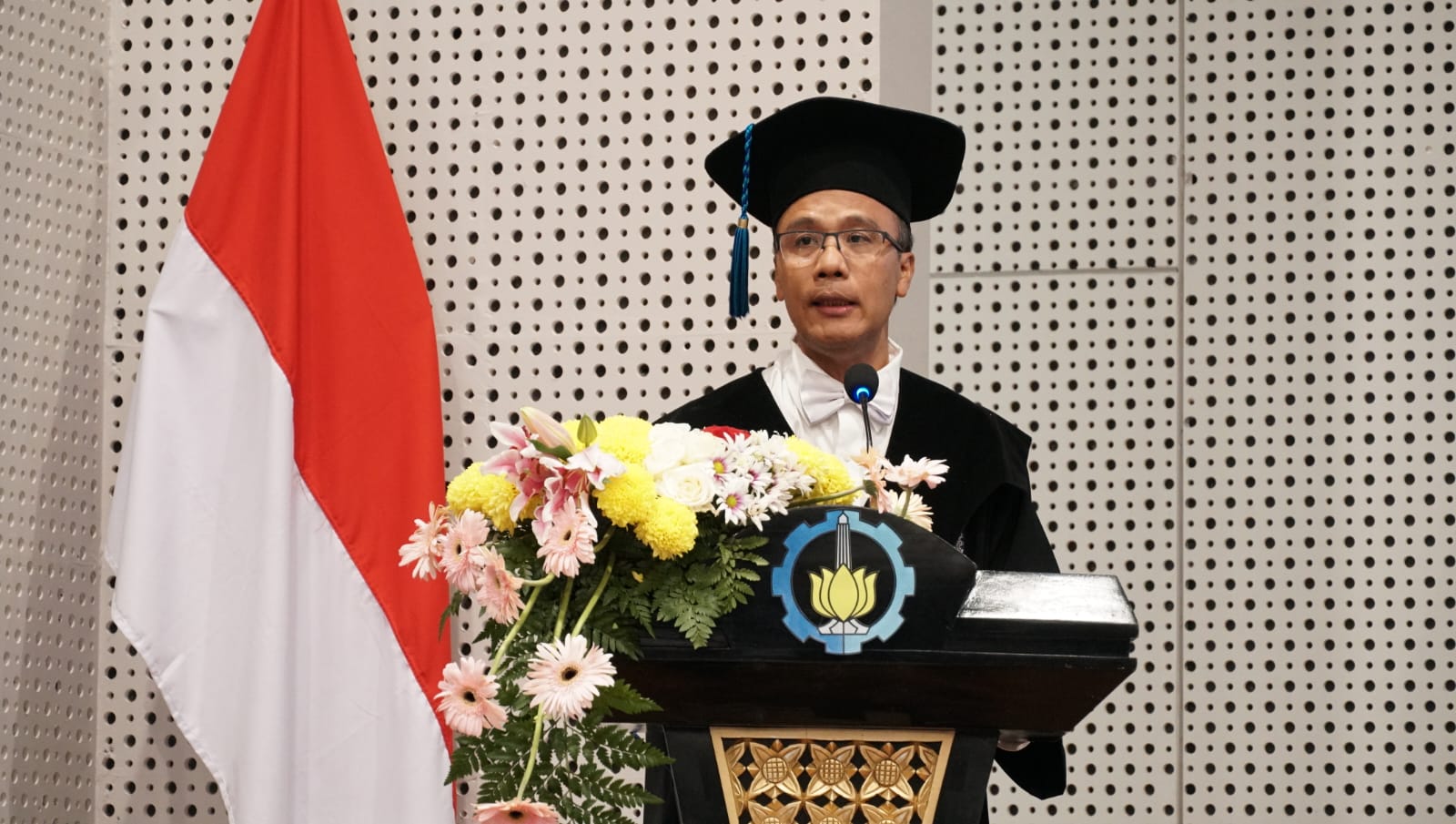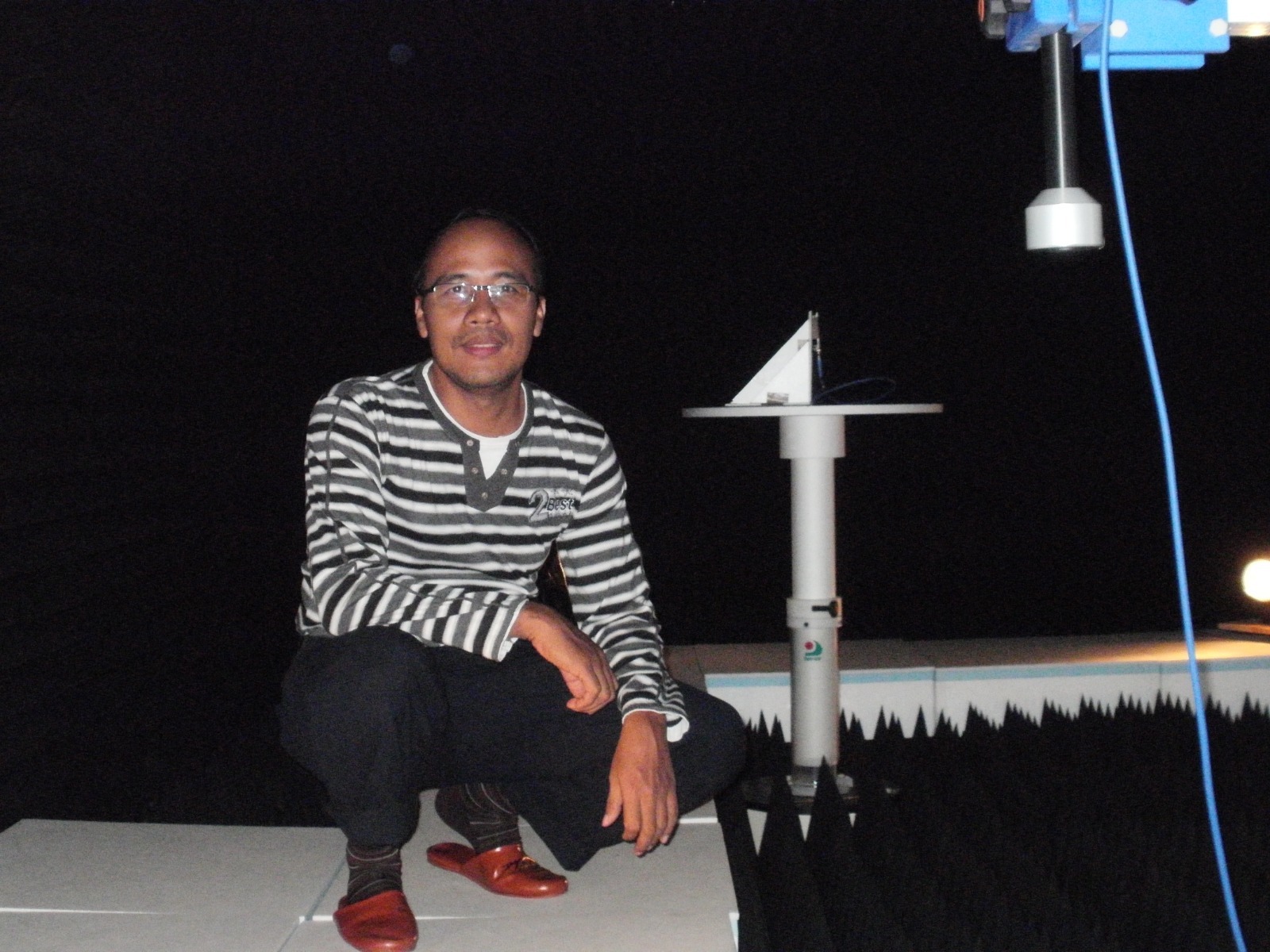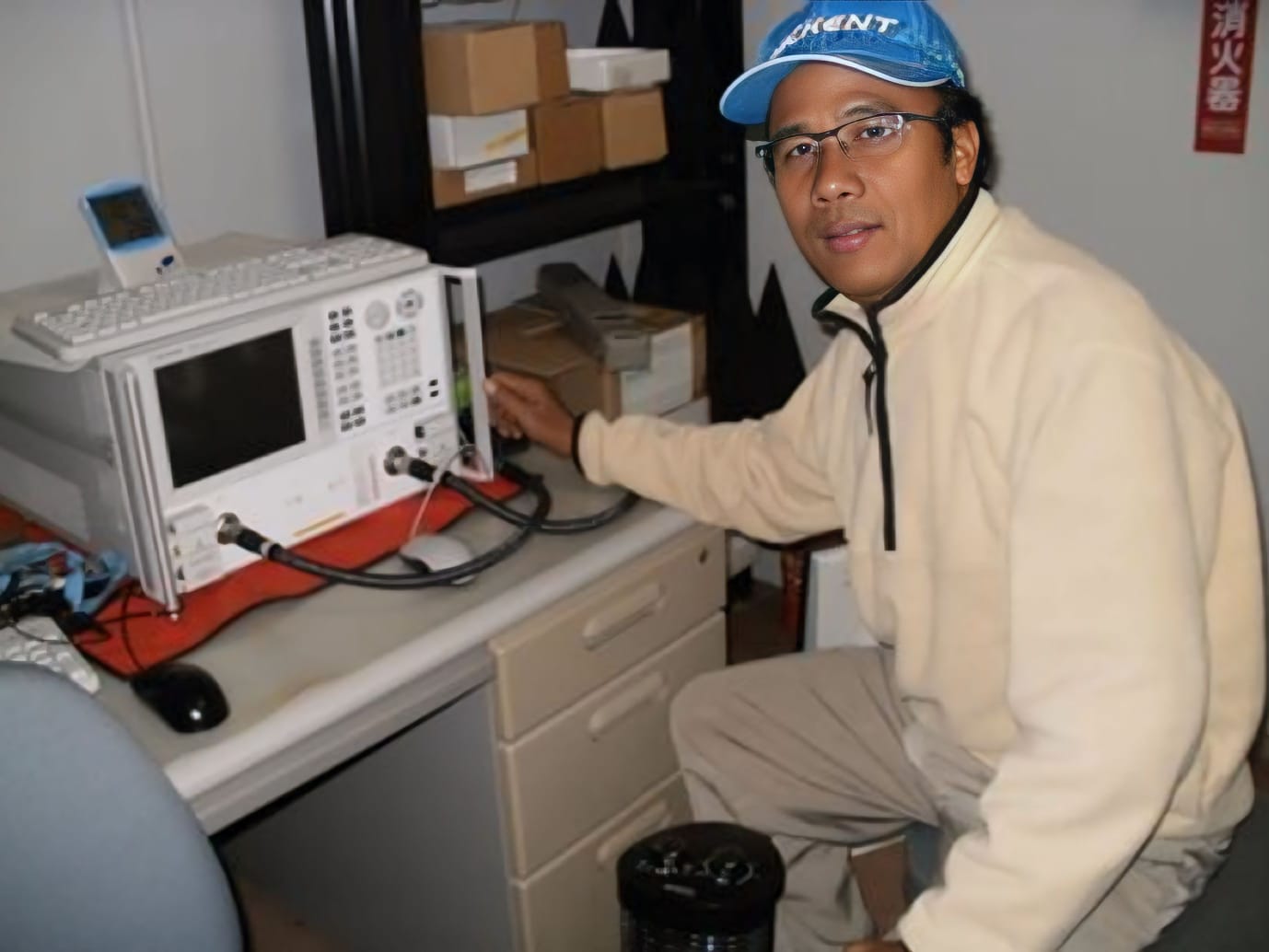 Professor Dr. Mashuri SSi MSi, while delivering his academic oration on anti-radar materials during the ITS Professorial Inauguration.
Professor Dr. Mashuri SSi MSi, while delivering his academic oration on anti-radar materials during the ITS Professorial Inauguration.
ITS Campus, ITS News —Indonesia requires independent defense technology to minimize threats from external parties. Therefore, the 203rd Professor of Institut Teknologi Sepuluh Nopember (ITS), Prof. Dr. Mashuri SSi MSi, has developed anti-radar material to support national defense and security technology.
The professor from the Department of Physics at ITS stated that this research began due to the presence of foreign aircraft that went undetected by radar systems while crossing the Java Sea back in 2010. According to him, such incidents could pose a serious threat to Indonesia if not addressed. “Because at that time, information on anti-radar technology was limited, we were determined to initiate and participate in researching radar wave-absorbing materials,” Mashuri explained.
In continuation, he and the Advanced Materials Laboratory team at ITS developed anti-radar technology using materials found throughout Indonesia. Essentially, radar wave absorbers are made from magnetic and dielectric materials such as carbon. “Physically, the surface of this anti-radar is formed with many sharp angles so that electromagnetic waves cannot be reflected back,” explained the Professor.
 Professor Dr. Mashuri SSi MSi in an electromagnetic wave-shielded room conducting research.
Professor Dr. Mashuri SSi MSi in an electromagnetic wave-shielded room conducting research.
In more detail, the doctor from the Physics department at ITS utilized Lumajang iron sand and bamboo charcoal as materials to develop anti-radar technology. In the process, iron sand from the eruption of Mount Semeru was synthesized to extract magnetic powder from the iron sand. Meanwhile, carbonization methods were employed on the bamboo charcoal to produce reduced Graphene Oxide (rGO) powder.
Afterward, Prof. Mashuri conducted absorption measurement tests of radar waves using a device called the Vector Network Analyzer. With a frequency band of 8 to 18 gigahertz (GHz), the combination of these two materials was able to absorb radar waves up to -20 decibels (dB). This figure indicates that the radar wave absorption capability reached over 99 percent.
 Professor Dr. Mashuri SSi MSi while conducting reflection loss measurements using an Agilent Vector Network Analyzer model E 8364C.
Professor Dr. Mashuri SSi MSi while conducting reflection loss measurements using an Agilent Vector Network Analyzer model E 8364C.
Mashuri explained that these figures may vary if the composition of the anti-radar alloy with paint is unbalanced during the application on this defense equipment. Additionally, environmental factors are also crucial in maintaining the consistency of radar wave absorption. “If this anti-radar is to be used on ships, it must be ensured that the anti-radar used has anti-corrosive properties,” he said.
In its implementation, Mashuri hopes that the newly created anti-radar material in Indonesia can be quickly applied in the national defense and security sector. “The hope is that we can master and have the same understanding as other countries and not rely solely on external parties,” he emphasized. (ITS Public Relations)
Reporter: Muhammad Aulia Zikra





